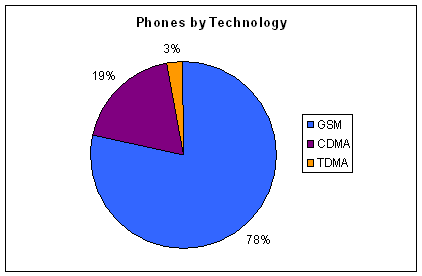The original cell phone was envisioned as a tool to give us the freedom to receive calls even when we’re not at home. Since the first cell phone call in 1973 by Martin Cooper, the cell phone has continually developer combining many functions normally found in other devices such as phone book, organizer, alarm, timer, camera, and more recently portable music player. But its original purpose as a communications device remains its top priority even today.
In the cell phone industry, a few different technologies exist to facilitate cell phone communications. Recent technologies enable cell phones to place calls, receive calls, send short messages called SMS, send images and/or sounds as MMS, or even browse the Internet. In Toronto, there are two main technologies being used CDMA and GSM. Since this won’t be a technical discussion, I won’t go into details about how each works but know that the two are not interchangeable so a phone designed for the CDMA network won’t work on the GSM network and vice versa. Now for service providers, Bell and Telus run on CDMA while Rogers and Fido run on GSM. Now for the survey results:

As you can see, a disproportionate number of my friends are using GSM phones so they are using either Fido or Rogers. GSM phones use a SIM card to store account information. By placing your SIM card into any GSM phone (assuming it is not locked to a service provider), you can immediately use that phone and phone calls to you will reach that cell phone. CDMA phones in North America do not work this way and require someone to either punch in codes to set up the account or to program it using a special cable connected to a computer. The advantage easily goes to GSM by allowing users to easily switch phones. Great convenience when your phone is damaged and you need to buy another one or borrow one from a friend.
Part 2 – Form, Screen, Camera
No comments:
Post a Comment